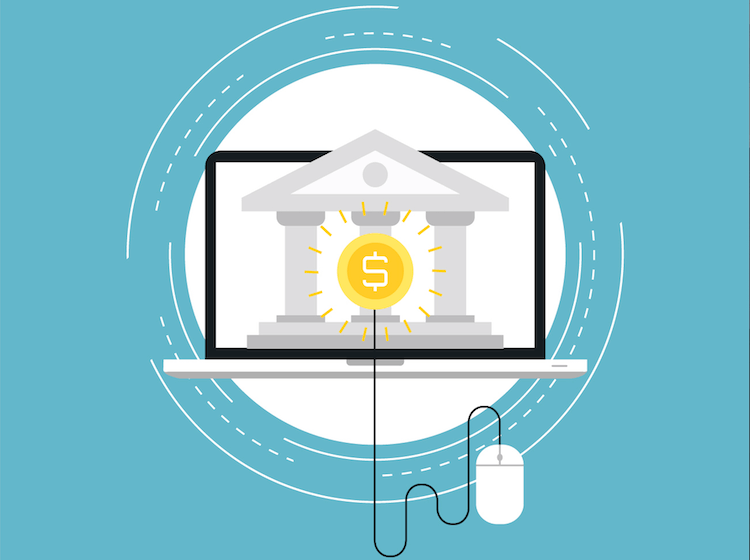
What You Need to Know About Central Banks Digital Currency
- Jakob Brezigar
- Last updated: 07.September 2024
- Reading time: 6 min
Money’s gone digital, folks! Imagine if the cash in your pocket decided to join the 21st century and got itself a sleek, digital makeover. While physical currency is still widely used, it is being used less in some countries, especially during the COVID-19 pandemic. Enter the world of Central Bank Digital Currency (CBDC). But what is a CBDC, you ask? Simply put, it’s a digital form of a country’s official money, issued and regulated by the central bank. It’s like traditional currency but with a high-tech twist, aiming to make transactions safer and more efficient. Ready to dive into the future of money?

Table of Contents
What is a Central Bank Digital Currency (CBDC)?
A CBDC is a digital form of a country’s fiat currency, issued and regulated by the central bank. It functions like traditional money but offers enhanced efficiency, security, and financial inclusion.
What are the risks associated with CBDCs?
Risks include privacy concerns due to traceability, potential technological instability, and cybersecurity threats. Additionally, CBDCs could disrupt existing financial systems and impact commercial banks’ operations.
Key Takeaways - Central Banks Digital Currency:
- Central bank digital currencies (CBDCs) represent a digital form of a country’s fiat currency, issued and regulated by central banks.
- CBDCs can increase efficiency, security, and financial inclusion, offering significant benefits over traditional payment systems and improving the domestic payments system.
- The global exploration of CBDCs includes 134 countries, with many in advanced stages of development.
- CBDCs can enhance crypto market liquidity, benefiting market makers like Orcabay by bridging traditional and digital currencies.
- CBDCs’ stability and regulatory oversight can boost trust in the crypto market, attracting more participants and increasing trading volume.
Why Are Central Bank Digital Currencies Not Good for Crypto Market Makers and Crypto as a Whole
As Orcabay, we take a firm stance against Central Bank Digital Currencies (CBDCs). Our concerns center around the issues of centralization, loss of privacy, and the potential for governments to monitor or block transactions at will. CBDCs also offer a mechanism for easier inflation through increased money supply, which goes against the principles of decentralization and limited supply that Bitcoin represents. We believe in a financial future where individual freedom and privacy are paramount—values that CBDCs inherently undermine.
Definition and Types of Central Bank Digital Currencies
A Central Bank Digital Currency (CBDC) represents the digital form of a country’s fiat currency, serving as a claim on the central bank. Unlike decentralized digital currencies like Bitcoin, CBDCs operate under centralized control and are a direct liability of the central bank. This distinction is crucial, as it ensures that the central bank retains control over the monetary supply and can implement monetary policy effectively. CBDCs come in two primary forms: wholesale and retail. Wholesale CBDCs target high-value transactions between banks, enhancing efficiency in interbank settlements and potentially reducing the costs and time associated with these transactions. Retail CBDCs, on the other hand, cater to everyday transactions for individuals and businesses, potentially revolutionizing how we handle money in daily life. Retail CBDCs can offer a secure and accessible form of digital payment, making transactions easier and safer for the general public.
CBDCs are fundamentally different from digital currencies that operate on distributed ledger technology (DLT) like blockchain. While DLT-based currencies are decentralized and often outside government control, CBDCs are issued and regulated by central banks, ensuring compliance with existing financial regulations. This regulatory oversight can help mitigate risks associated with digital transactions, such as money laundering and fraud. Furthermore, CBDCs could integrate seamlessly with existing financial systems, providing a bridge between traditional banking and modern digital finance.
History of Central Bank Digital Currencies
The journey towards CBDCs has been in the making for decades. In the 1990s, Finland’s central bank made an early foray with the Avant stored value e-money card, marking one of the first attempts at digital currency issued by a central bank. This early experiment laid the groundwork for future developments in digital currencies. Fast forward to 2014, the Chinese central bank began exploring CBDCs, leading to the digital yuan’s development. China’s proactive approach has positioned it as a leader in the CBDC space, with ongoing trials and implementations showcasing the potential benefits of such a currency. In 2021, Australia’s central bank tested a proof of concept for a wholesale CBDC using Ethereum, marking another significant milestone. These examples highlight the global interest and varied approaches to implementing CBDCs.
Central banks around the world are increasingly considering CBDCs to modernize their financial systems and keep pace with the digital economy. The European Central Bank, for instance, is actively exploring the potential of a digital euro, aiming to enhance the efficiency and security of the European payments system. Similarly, the Federal Reserve Bank in the United States is conducting research to understand the implications of a digital dollar. These initiatives underscore the global momentum towards embracing digital currencies as a complement to traditional fiat money.
Benefits of Central Bank Digital Currency
CBDCs offer numerous benefits, addressing key issues related to efficiency, security, and access in the financial system. By reducing transaction costs and times, CBDCs present a more efficient alternative to traditional payment systems. The digital nature of CBDCs can provide new tools to enhance financial inclusion, allowing more people to participate in the economy. Additionally, with enhanced security features, CBDCs can safeguard transactions against fraud and cyber threats, bolstering trust in digital finance.
CBDCs can support the financial services sector by providing new tools and enhancing financial inclusion, which is crucial for a nation’s government and its commercial-banking system.
CBDCs can also improve the effectiveness of monetary policy transmission by providing central banks with more precise tools to manage the money supply and control inflation. For instance, CBDCs can facilitate direct transfers to citizens, bypassing intermediaries and ensuring that monetary policy measures reach the intended recipients promptly. This capability is particularly valuable in times of economic crisis when rapid and targeted interventions are needed.
Furthermore, CBDCs can play a crucial role in combating money laundering and other financial crimes. The traceability of digital transactions allows for better monitoring and regulation, making it more challenging for illicit activities to go undetected. This increased transparency can enhance the overall integrity of the financial system, benefiting both regulators and law-abiding citizens.
Why Central Banks Are Interested in Digital Currency
Several trends have piqued the interest of central banks in digital currencies. Efficiency improvements, enhanced security, broader access, and the potential for increased financial inclusion are compelling reasons. Moreover, the rise of private digital currencies, like cryptocurrencies, has pressured central banks to issue their own digital currencies to maintain control over the monetary system. While the potential benefits are significant, central banks are also aware of the inherent risks involved.
The increasing digitization of economies and the proliferation of digital payments have made it imperative for central banks to adapt. Digital currencies can offer a more resilient and inclusive financial system, capable of withstanding disruptions and providing services to underserved populations. Additionally, central banks are keen to harness the advantages of digital technology to enhance the efficiency and security of the financial system.
The potential for CBDCs to increase financial inclusion is particularly appealing to central banks. By providing a secure and accessible digital payment option, CBDCs can reach individuals who are currently unbanked or underbanked, offering them a gateway to the formal financial system. This inclusion can drive economic growth and reduce poverty, making it a powerful tool for social and economic development.

Risks and Concerns Around Central Bank Digital Currency
Despite their advantages, CBDCs come with risks. The traceability of digital money, for instance, raises concerns about privacy and the potential for increased taxation, which might hinder adoption. Technological stability is another issue, exemplified by the Eastern Caribbean’s DCash, which experienced outages. Cybersecurity and data privacy are paramount, as robust security measures are essential to protect user data and maintain trust in the system.
The implementation of CBDCs also poses challenges related to financial stability. The introduction of a new form of money could disrupt existing financial systems and institutions, leading to unintended consequences. For example, the widespread adoption of CBDCs might result in reduced deposits for commercial banks, potentially affecting their ability to lend and support economic activity. Central banks must carefully consider these potential impacts and design CBDCs in a way that minimizes disruptions.
Moreover, the use of digital currencies could exacerbate issues related to digital inequality. Access to and familiarity with digital technologies vary significantly across different populations, and some individuals may find it challenging to adapt to digital currencies. To address this, central banks and governments need to invest in digital literacy programs and infrastructure to ensure that all citizens can benefit from the transition to digital finance.
Implementation and Technical Considerations
Implementing a CBDC involves numerous technical considerations. Typically, a CBDC would be managed via a database operated by the central bank, government, or authorized private-sector entities. This database would record the amount of money held by every entity, incorporating privacy and cryptographic protections. The distribution models and infrastructure play crucial roles, with commercial banks and other financial institutions likely to be integral to the system.
The choice of technology for CBDC implementation is critical. Some central banks may opt for a centralized database, while others might explore distributed ledger technology. Each approach has its advantages and challenges. Centralized systems offer more control and simplicity, but may be less resilient to attacks. Distributed ledgers, while more secure and transparent, could be more complex to manage and scale.
Interoperability with existing payment systems and financial institutions is another important consideration. CBDCs should seamlessly integrate with the current financial infrastructure to ensure widespread adoption and minimize disruption. This integration will likely involve collaboration with commercial banks, payment service providers, and other financial institutions to develop a cohesive and efficient digital payment ecosystem.
International Implications of Central Bank Digital Currency
The global impact of CBDCs is substantial. As of now, 134 countries and currency unions, accounting for 98% of global GDP, are exploring CBDCs. Among the Group of 20 (G20) countries, 19 are in advanced stages of CBDC development. Cross-border payment systems and trials are vital for CBDC success, facilitating seamless transactions across international borders and potentially transforming global finance.
The international implications of CBDCs extend beyond just payments. CBDCs could reshape the global financial landscape by altering the dynamics of international trade and investment. For example, a widely adopted CBDC could reduce reliance on traditional reserve currencies like the US dollar, potentially leading to shifts in global economic power.
Additionally, CBDCs could enhance the efficiency and transparency of international settlements. By providing a secure and standardized digital payment method, CBDCs can reduce the costs and complexities associated with cross-border transactions. This capability is particularly beneficial for businesses engaged in international trade, as it can streamline operations and improve cash flow management.
Preparing for the Future of Central Banks Digital Currency
As we look towards the future, central banks must consider several questions: What purpose will the CBDC serve? Who is the target audience? How will it be distributed and secured? What are the potential risks and benefits? Governments and private companies also need to understand the implications of CBDCs and develop strategies to adapt to their impact on financial systems and economic policies.
Preparation for CBDC implementation involves extensive research and pilot programs to test various design and distribution models. Central banks must engage with stakeholders, including commercial banks, payment service providers, and the general public, to gather feedback and refine their approaches. These collaborative efforts are crucial to ensuring that CBDCs meet the needs of all users and function effectively within the broader financial ecosystem.
Additionally, education and public awareness campaigns are essential to promote understanding and acceptance of CBDCs. Clear communication about the benefits and risks of digital currencies can help build trust and encourage adoption. Central banks and governments should also work to address any legal and regulatory challenges associated with CBDCs, ensuring that they comply with existing financial laws and standards.

Conclusion: The Future of Central Banks
Digital Currency CBDCs represent the digital counterpart to fiat money, issued and regulated by central banks. Like traditional banknotes, they function as a means of payment, a unit of account, and a store of value. The future of CBDCs is promising, but it necessitates careful consideration of the benefits, risks, and implications for financial inclusion, economic growth, and monetary policy. As we stand on the brink of this financial revolution, the way forward requires collaboration, innovation, and a keen understanding of the evolving digital landscape.
The adoption of CBDCs could herald a new era in digital finance, offering unprecedented opportunities for efficiency, security, and inclusivity. However, it also demands a thoughtful approach to address the potential challenges and ensure that the transition benefits all stakeholders. By leveraging the lessons learned from early adopters and ongoing research, central banks can pave the way for a stable and prosperous digital financial future.
Disclaimer: The information provided in this article is for informational purposes only and does not constitute financial, investment, or other professional advice. All opinions expressed herein are solely those of the author and do not represent the views or opinions of any entity with which the author may be associated. Investing in financial markets involves risk, including the potential loss of principal. Readers should perform their own research and consult with a licensed financial advisor before making any investment decisions. Past performance is not indicative of future results.

Jakob Brezigar
Jakob, an experienced specialist in the field of cryptocurrency market making, boasts an extensive international presence. With Orcabay, he has skillfully managed major operations and deals for a wide array of global stakeholders.



